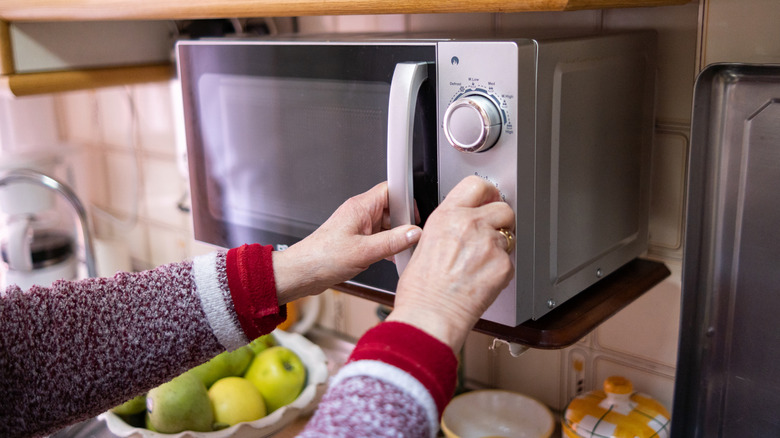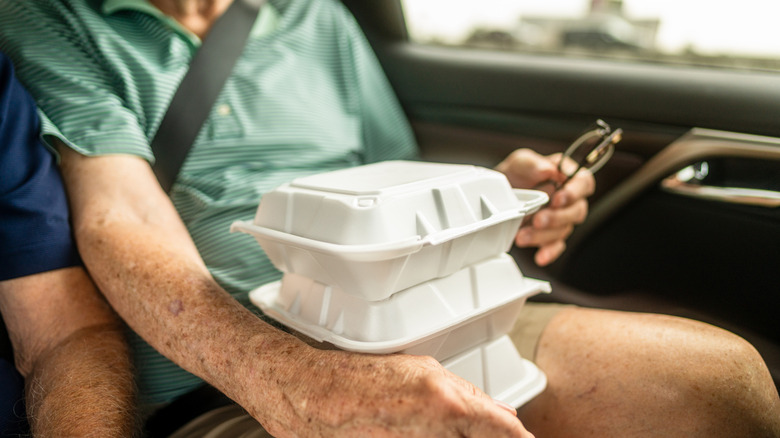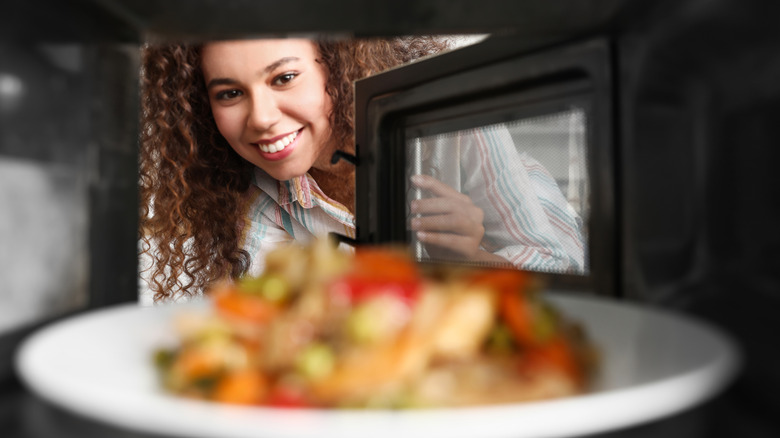Why You Should Never Put Styrofoam Containers In The Microwave
Feel like you're seeing fewer Styrofoam containers these days? You may be right. According to Packaging Dive, a wave of Styrofoam bans started sweeping over the United States in 2025. States like Rhode Island and Oregon are enacting laws that prohibit the use of polystyrene foam (Styrofoam) containers in eateries.
Still, you might occasionally be given takeout in a Styrofoam clamshell, depending on where you live. But remember that the Styrofoam is just a temporary storage carrier for your food. When you get home and want to heat up your meal, you should always transfer your items to a microwave-safe dish or plate before "nuking" it. (As a side note, you also should never microwave food in most plastic containers.)
So, what's the harm in just popping your Styrofoam container in the microwave? Styrofoam is made of expanded polystyrene, which is mostly made from a chemical called styrene monomer (or just styrene). Although styrene has been historically used in the manufacture of a wide variety of commercial products, it's not completely harmless to humans. When you store food in a Styrofoam container, small quantities of styrene can be transferred to your food — and microwaving speeds up the process. As Arizona State University professor Rolf Halden explains (via Business Insider), "Heat can generate more free chemical building blocks, and it also accelerates their movement out of the plastic and into the food."
Potentially toxic food packaging
A 2019 reanalysis of international cohort study data (via Occupational and Environmental Medicine) found a strong relationship between styrene exposure and non-Hodgkin's lymphoma, esophageal cancer, and pancreatic cancer (the cause of death of Evel Knievel's son, Robbie). Additionally, the National Library of Medicine describes styrene as "reasonably anticipated to be a human carcinogenic."
At this point, you might be worried about eating food that's been in a Styrofoam container, whether or not it's been in the microwave. And your worries might not entirely be unfounded, since the Centers for Disease Control and Prevention (CDC) notes that "small amounts of styrene" can leach into food that's been in a styrene-based container. This type of leaching effect could be amplified when styrene is exposed to heat, which was observed in a 2021 study in Foods. The researchers tested migration of styrene particles in various foods under different temperature settings. Moreover, fattier foods contained more styrene after they'd been stored long-term or heated to high temperatures in Styrofoam containers.
How to avoid using Styrofoam containers for takeout food
Don't worry; even if you've already microwaved a few Styrofoam containers in your life, you will probably be okay. It's the cumulative effect of doing it repeatedly that causes a potential problem. Besides, studies on styrene have often been performed using people who worked with styrene materials for many years, not those who infrequently zap their to-go orders.
Some Styrofoam containers are marked with a seal that indicates they're safe for microwaving. However, if you're at all concerned, you may want to take the extra time to plate your food and then warm it to your preferred temperature. If you're buying food to go and want to bypass using a Styrofoam container entirely, you could bring your own container or ask if the establishment has a sustainable and possibly safer alternative.
Be sure to recycle Styrofoam containers appropriately, rather than simply trashing them. You can also find creative second uses for them, like Styrofoam plates as gym sliders (here are other things in your house you can use in your workouts).


